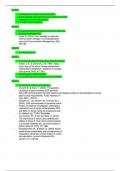Samenvatting
Summary PRRM - alle literatuur inclusief de artikelen! :)
Ik dit document zijn alle literatuur hoofdstukken samengevat, samen met de artikelen:) 47 pagina's met allemaal interessante informatie, nodig om dit vak te halen! Succces
[Meer zien]




